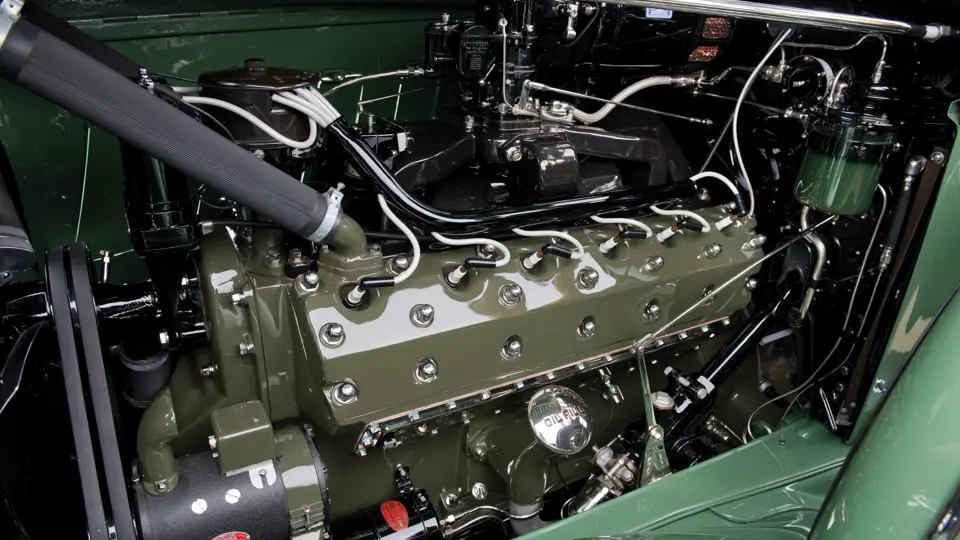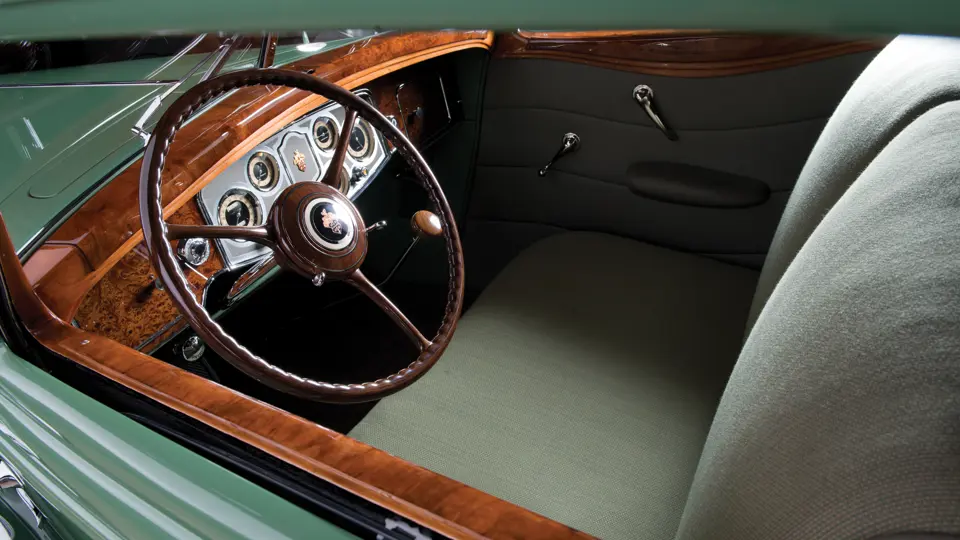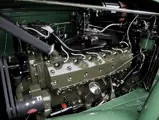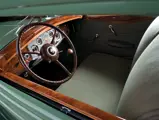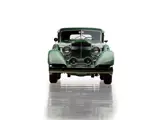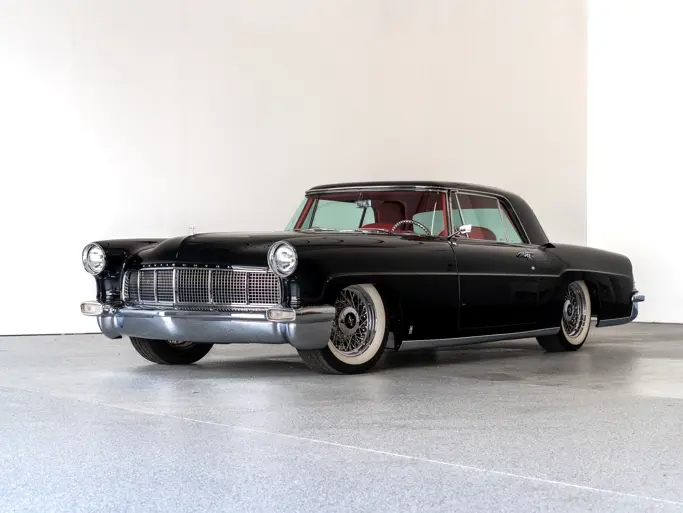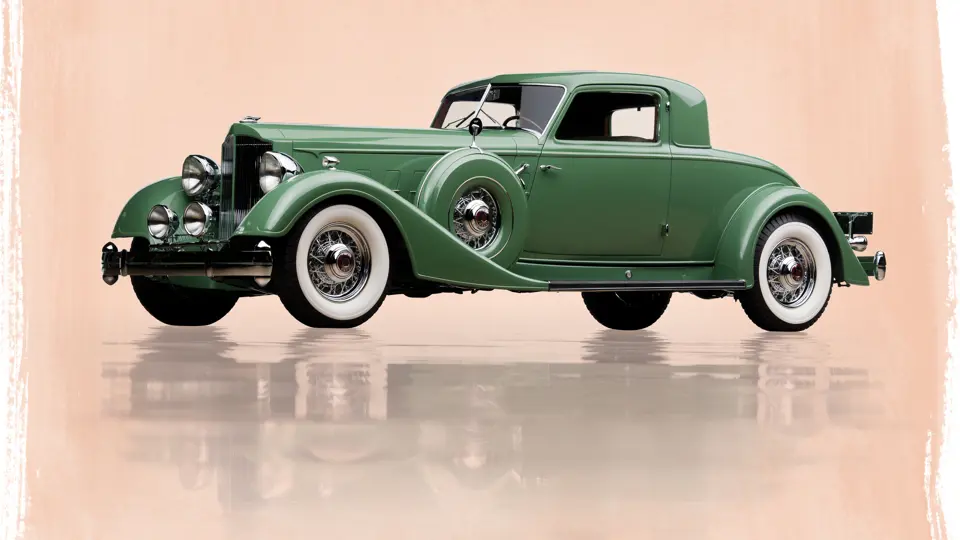
1934 Packard 1108 Twelve Stationary Coupe by Dietrich
{{lr.item.text}}
$4,180,000 USD | Sold
{{bidding.lot.reserveStatusFormatted}}
- A sumptuous, beautiful Dietrich design on the Eleventh Series chassis
- One of five known survivors; long-term enthusiast ownership
- Well-known history, with fascinating original ownership
- Exquisite Pebble Beach Best in Class-winning restoration
- Simply put, the epitome of CCCA Full Classic design
Series 1108. Body Style 4068. 160 bhp, 445.5 cu. in. modified L-head V-12 engine, three-speed selective synchromesh manual transmission, vacuum-assisted clutch, shaft drive with a hypoid rear axle, front and rear leaf-spring suspension, and four-wheel vacuum-assisted mechanical drum brakes. Wheelbase: 147 in.
Packard management, while conservative, was always on the lookout for new talent. When Raymond Dietrich set up Dietrich Inc. in Detroit as the design arm of Murray Body Corporation, his smart and elegant designs attracted the attention of East Grand Boulevard. As a result, Packard soon became one of Dietrich’s best customers, to the point where they incorporated his styling cues in later production cars. After 1933, all open Packards carried Dietrich body tags, as they recognized the influence of Dietrich’s work.
However, as all true Packard aficionados know, Dietrich does not necessarily mean “Dietrich.” True Dietrichs are the so-called Individual Custom cars that were built and offered on a limited-production basis, with only a few of each style being produced per year between 1931 and 1934. These Individual Customs were offered only on Packard’s Senior Eight and Twelve chassis, and their lines were simply exquisite, beginning with its graceful vee’d windshield, continuing on to the Dietrich’s trademark beltline, and finishing with a superb and elegantly tailored roofline and tail.
One of the most impressive Dietrich bodies was the two-passenger stationary coupe, so-named to set it apart from the coupe roadster. This body was the ultimate in Classic Era logic, and it rode the same 147-inch-wheelbase 1108 chassis as other Eleventh Series Individual Custom Dietrichs, but it could hold only a comfortable pair of adults and their luggage. It was a stunning machine that looked as powerful as, indeed, it was.
Five surviving 1934 Eleventh Series Twelve Individual Custom Stationary Coupes are known, of which all but the car offered here are held in long-term, private museum collections, from which they are unlikely to soon emerge.
MRS. EKEN’S PACKARD
The Stationary Coupe offered here is vehicle number 1108-32, and it was delivered on November 1, 1933, to Morristown Packard, of New Jersey, as is indisputably proven by the original vehicle number plaque still attached to the firewall. While the original Dietrich brass tag is no longer mounted to the wood below the driver’s seat, it was fortunately photographed on the car by a previous owner, identifying it as being body style number 4068 (the stationary coupe) and body number 8232.
Most impressively, we know the name of the original owner, thanks to a properly filled-out service booklet for Packard Lubrication Service, which accompanies the car. The booklet notes that model 1108, with engine number 901979, was sold new on November 2, 1933, to Mrs. A.J. Eken, who had addresses in both Morristown and Madison. Given that the date of sale is so near to that of the car’s delivery, it is likely that rather than being built as a showroom display model, this car was specifically crafted for Mrs. Eken. Mrs. Eken is believed to have been the spouse of Andrew Jackson Eken, one of the contractors who built the Empire State Building.
The next owner of record for vehicle number 1108-32 was Charles Earle Theall, who purchased it on August 27, 1957, from Valerie Motors, of Mamaroneck, New York. Mr. Theall’s ownership of the car was no secret, and it was definitely known to enthusiasts, as he is listed with the car in Edward J. Blend’s The Magnificent Packard Twelve of Nineteen Thirty-Four. He worked on its restoration for over 40 years, in a garage that had been built specifically for this purpose, as it was completely walled-in and without a garage door, to keep prying eyes away and to make theft considerably more difficult.
The car was acquired from the Theall Estate by Ralph Marano, the first of several important modern-day Packard enthusiasts to have since owned this Stationary Coupe. Its restoration, which was performed by well-known Stone Barn Restorations, of Alpha, New Jersey, was begun for Carmine Zeccardi, but it was completed for J. Frank Ricciardelli, who had fallen in love with the car’s elegant lines and masterful detailing. Reportedly, the car’s long, careful storage in the Theall garage had preserved it well, and the panels and paint surfaces were able to be fit laser-tight, with only minor repairs.
Considerable research was required to determine the correct colors for the car, which ended up being a lovely, very subtle two-tone mint green arrangement that had been taken from the original sales manual for the Individual Customs. A small square of the original upholstery provided proof of the original materials and weave, while a period photograph reportedly determined the colors. The result is a truly wonderful car with an undeniably authentic look.
The completed car debuted at the 2005 Pebble Beach Concours d’Elegance, where, in a virtually unprecedented performance, it was recognized with a First in Class, the CCCA Award of Excellence, and the Most Elegant Closed Car.
Given that historical factory documentation simply does not exist for Packards, it is rare indeed to find a Dietrich Individual Custom with proof of its origins, but in this case, not only does this car have its original firewall-mounted data tag, it also has the service booklet, which confirms its original engine number, original owner, and delivery details. This confirmed history, coupled with the best modern, authentic restoration, which has been recognized as superlative by the most finicky of judges, has resulted in a truly superb Packard Twelve, one that has lines that are anything but stationary!




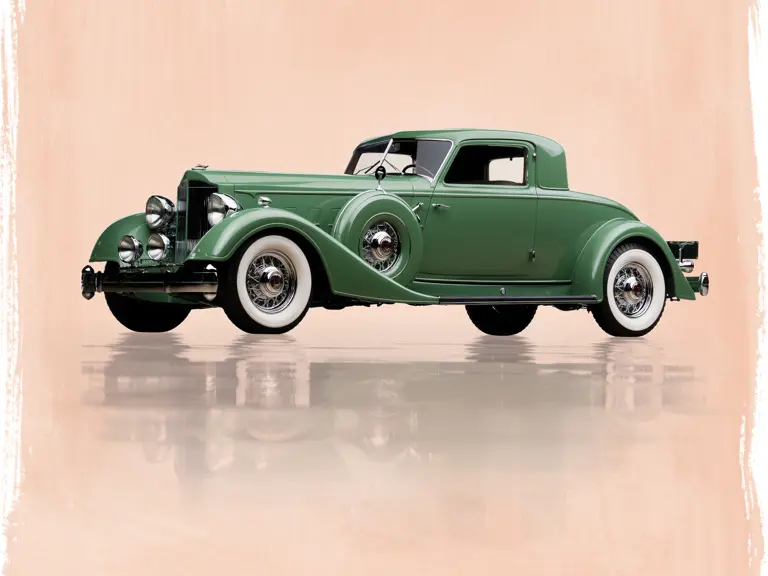
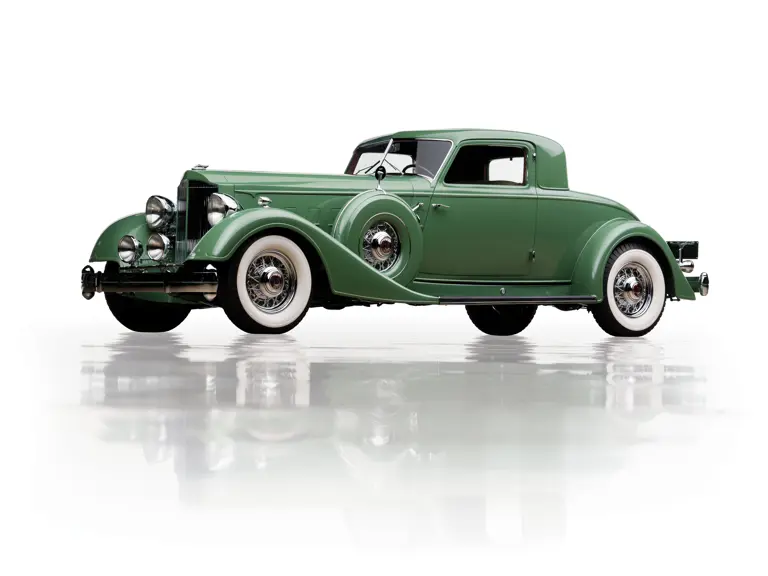
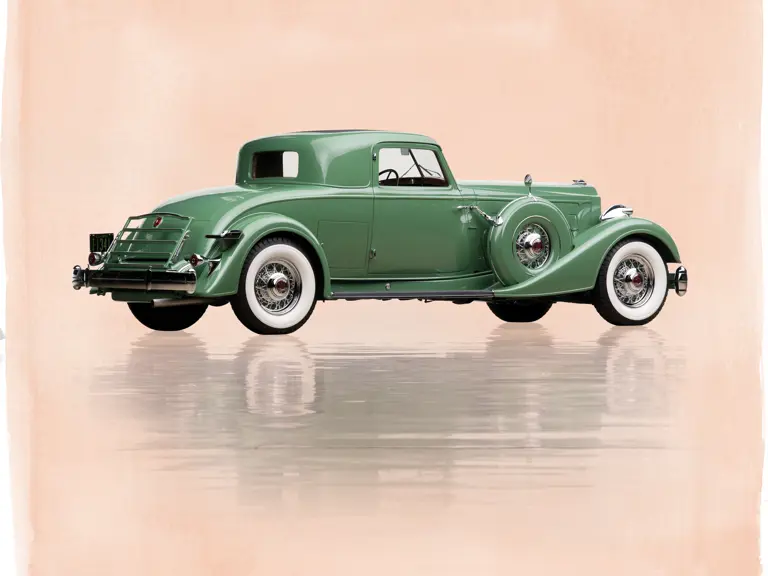
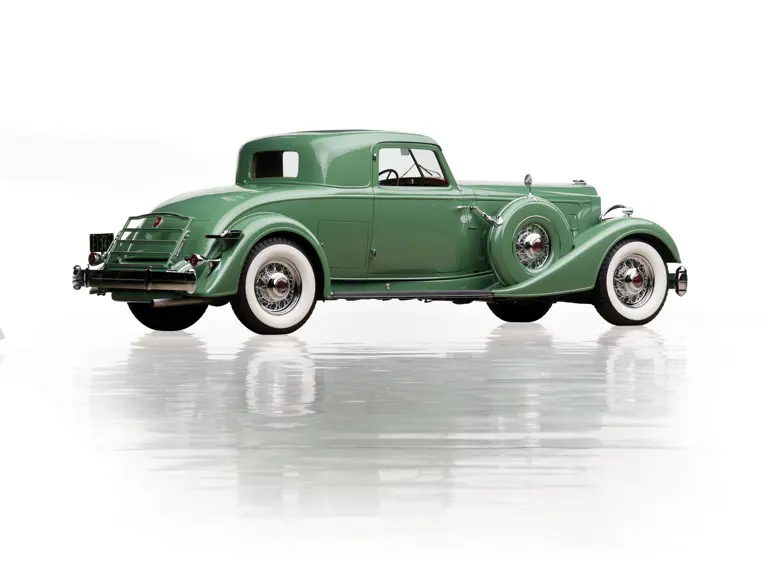

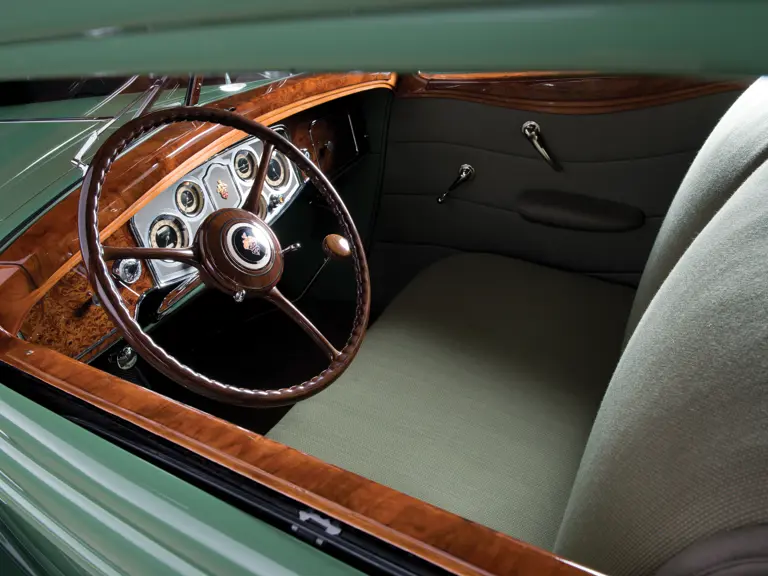

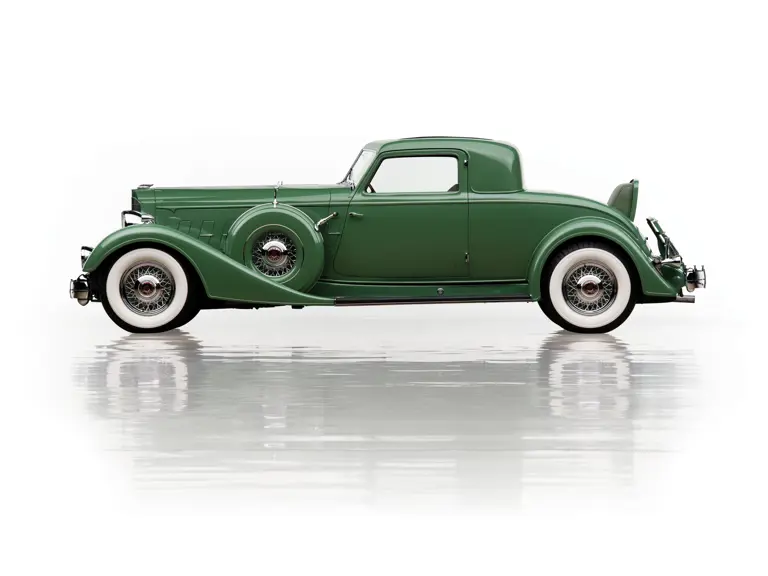

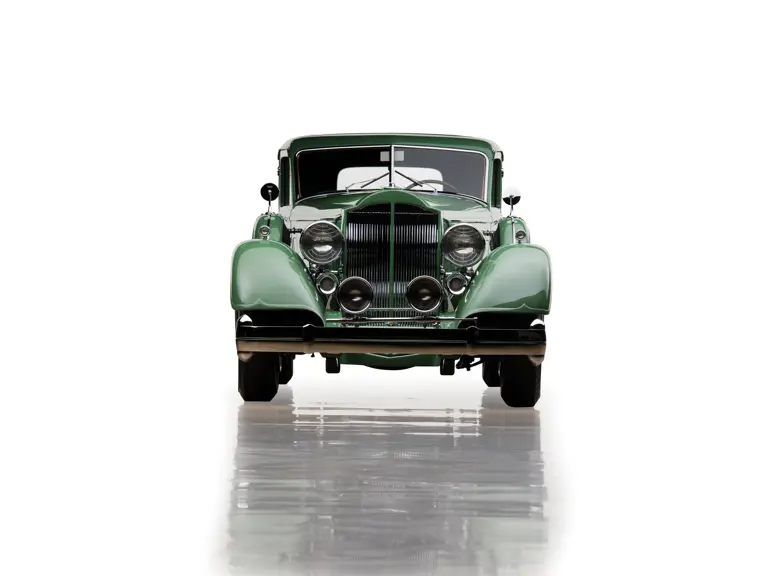
 | Fort Worth, Texas
| Fort Worth, Texas
